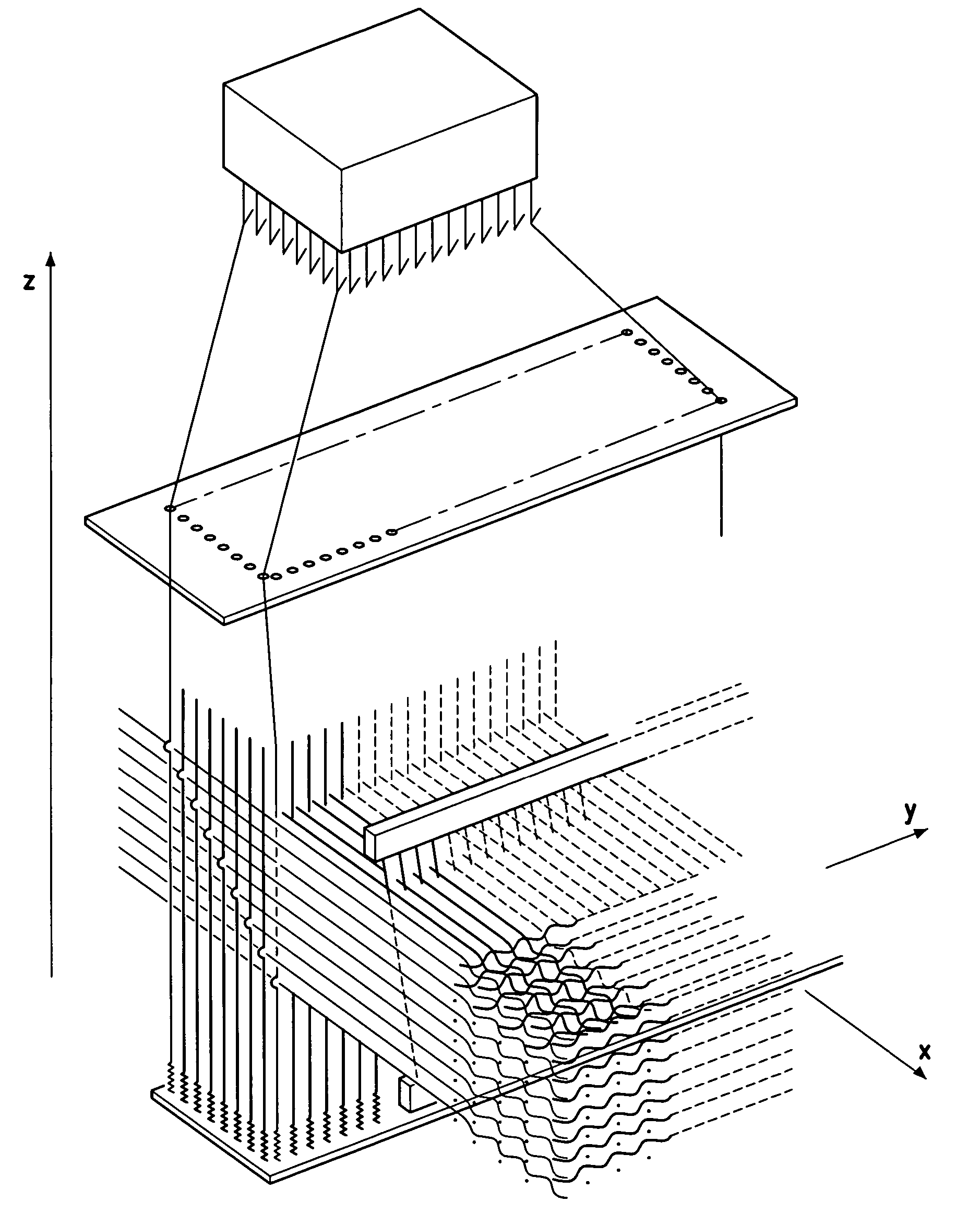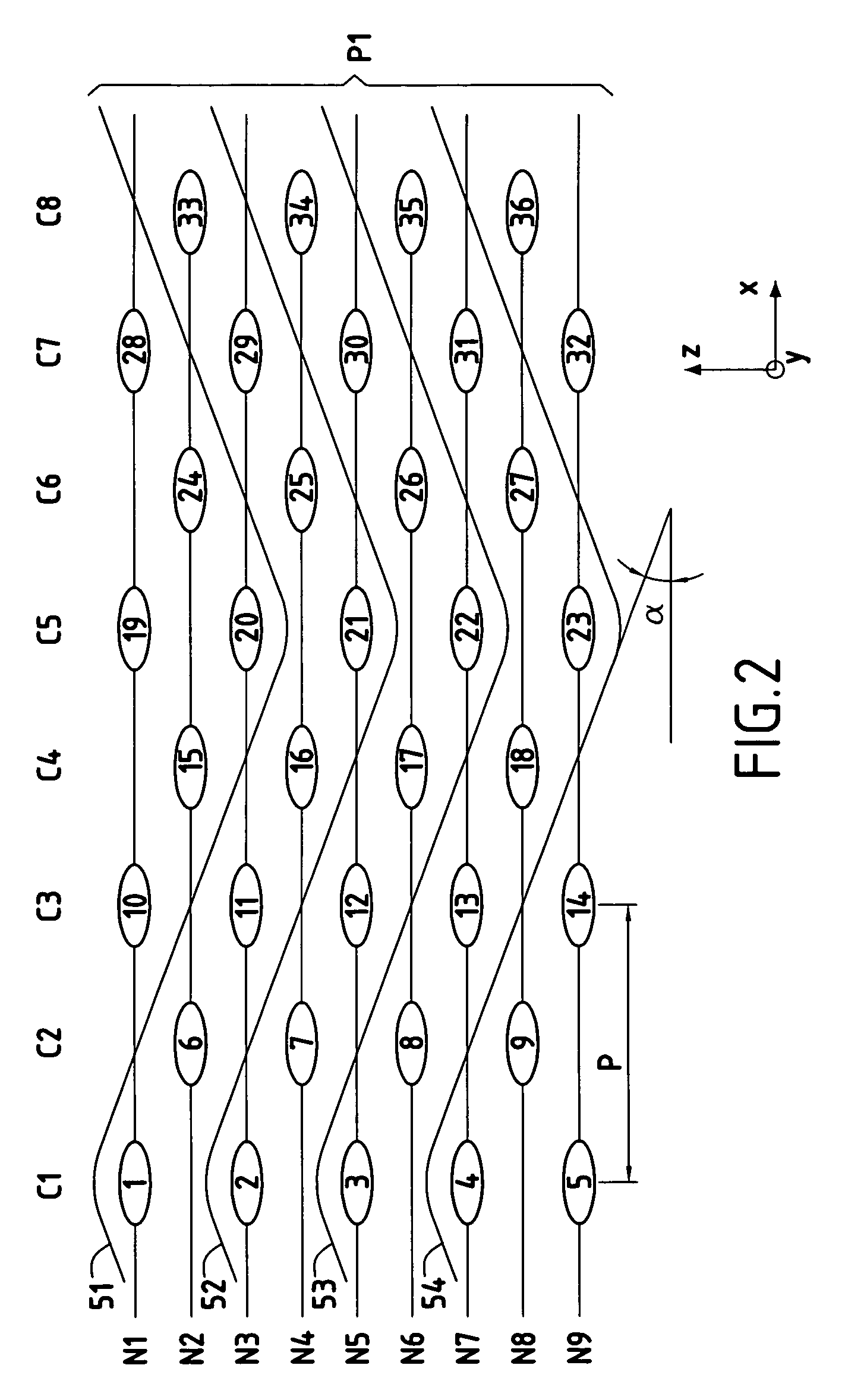Turbomachine blade, in particular a fan blade, and its method of manufacture
a technology of turbine blades and turbine blades, which is applied in the direction of machines/engines, weaving, liquid fuel engines, etc., can solve the problems of requiring a plurality of parts, difficult techniques, long and expensive,
- Summary
- Abstract
- Description
- Claims
- Application Information
AI Technical Summary
Benefits of technology
Problems solved by technology
Method used
Image
Examples
Embodiment Construction
[0059]In the description below, the longitudinal direction, the transverse direction, and the vertical direction correspond respectively to the directions of arrows x, y, and z in the figures.
[0060]FIG. 1 is a diagram showing a Jacquard-type loom having the warp yarns mounted thereon which are oriented in the longitudinal direction (arrow x) and which extend in a plurality of layers superposed in the vertical direction (arrow z), together with the weft yarns which are oriented in the transverse direction (arrow y).
[0061]FIGS. 2 to 9 show the base pattern of the first weave for a preform in accordance with the present invention. This first weave comprises thirty-six weft yarns 1 to 36 (i.e. they are shown in section) disposed in a staggered configuration on nine superposed levels N1 to N9, and distributed in eight columns C1 to C8, comprising:[0062]a first column C1 of five superposed weft yarns 1 to 5 situated respectively at levels N1, N3, N5, N7, and N9;[0063]a second column C2 of...
PUM
| Property | Measurement | Unit |
|---|---|---|
| shrinkage angle | aaaaa | aaaaa |
| step size | aaaaa | aaaaa |
| step size | aaaaa | aaaaa |
Abstract
Description
Claims
Application Information
 Login to View More
Login to View More - R&D
- Intellectual Property
- Life Sciences
- Materials
- Tech Scout
- Unparalleled Data Quality
- Higher Quality Content
- 60% Fewer Hallucinations
Browse by: Latest US Patents, China's latest patents, Technical Efficacy Thesaurus, Application Domain, Technology Topic, Popular Technical Reports.
© 2025 PatSnap. All rights reserved.Legal|Privacy policy|Modern Slavery Act Transparency Statement|Sitemap|About US| Contact US: help@patsnap.com



